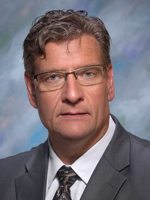The potential for shrinking reimbursements, paired with a changing regulatory environment, are forcing nursing home operators to rethink their model to remain profitable.
As both federal and state governments look to scale back spending and regulators push a model of reimbursement that ties spending to quality, nursing homes face newfound pressure to survive amid ever-evolving challenges.
 “The old model of keeping heads in beds and getting a fee-for-service reimbursement just by having somebody in the facility – that is going away rapidly,” said Brian Gabriel, a partner at Baker Tilly Virchow Krause LLP. “It really is looking at outcomes. Are people being rehabilitated in a shorter period of time and are they being sent home healthier and not coming back to the system for the same ailment or problem that they had?”
“The old model of keeping heads in beds and getting a fee-for-service reimbursement just by having somebody in the facility – that is going away rapidly,” said Brian Gabriel, a partner at Baker Tilly Virchow Krause LLP. “It really is looking at outcomes. Are people being rehabilitated in a shorter period of time and are they being sent home healthier and not coming back to the system for the same ailment or problem that they had?”
Medicare does not cover long-term residential placements, but rather short-term stays, usually associated with rehabilitation following a hospital stay. Medicaid covers long-term nursing home care for individuals who meet certain income and asset requirements.
Lawmakers’ proposed cuts to Medicare and caps on Medicaid spending have prompted concern among the health care community, including the nursing home industry.
Efforts to repeal and replace the Affordable Care Act earlier this year called for the Medicaid program to be converted to a block grant, or per capita cap model, which would provide a fixed amount per recipient. That’s compared to the current structure, by which the government covers a share of medical care costs for qualifying individuals and the state pays the rest. The restructuring would have meant cuts in federal Medicaid contributions to the states.
While efforts to repeal and replace the ACA didn’t materialize, Medicaid funding cuts loom as federal and state governments seek to rein in spending.
According to a Kaiser Health News study, Medicaid was the primary payer for 55 percent of nursing home residents in Wisconsin in 2015.

Currently, Wisconsin’s skilled nursing home facilities face a $55 deficit for each patient per day compared to their Medicaid reimbursement, said Louis Shiber, senior manager with Baker Tilly’s health care practice.
“That deficit is what has the (nursing home and health care) associations up in arms, saying the reimbursement system is unsustainable,” Shiber said. “That’s true. But the question is how are you going to operate (now) with all of these bundled payments and value-based purchasing and things of that nature? That’s what the facilities need to concentrate their time on – what other services are we going to provide?”
The stakes for nursing homes are intensified by the impending influx of baby boomers who will require their services.
“As of today, the average number of days that a person will reside in a skilled nursing facility is 904,” Shiber said. “The average cost of a nursing home in the U.S. is $77,000 annually. When you envelope that and sit back, you ask, ‘Where is this going and what is the state doing with a limited amount of resources and what’s happening with the baby boomers?’ We’re in trouble.”
The answer, in part, is found in the push toward community- and home-based care, Shiber said. Providers are expanding beyond their four walls to provide care in alternative settings.

“The aim is to provide the best possible care and best possible outcome for residents and patients at the lowest possible cost in the most efficient manner,” Gabriel said. “And for the provider, it’s a continuous challenge as to how to do that with shrinking reimbursement resources, yet more demands being placed on them. So I think wellness programs, population health management is a key goal here, keeping them out of institutions and allowing them to stay at home longer and keeping overall costs down.”
Uncertainty regarding reimbursements also has nursing homes seeking ways to attract more private payer residents to minimize their reliance on government-funded sources, Gabriel said.
“They’re branching out beyond their own walls even and trying to get into providing other services that are reimbursable, not just from private pay, but also from Medicare and/or Medicaid in some instances,” Gabriel said. “Providers are trying to position themselves better in the marketplace to capture as many of those short-term rehabilitation stays for Medicare residents within their facilities and then also capture other opportunities with folks in the community to provide home care or other services.”

